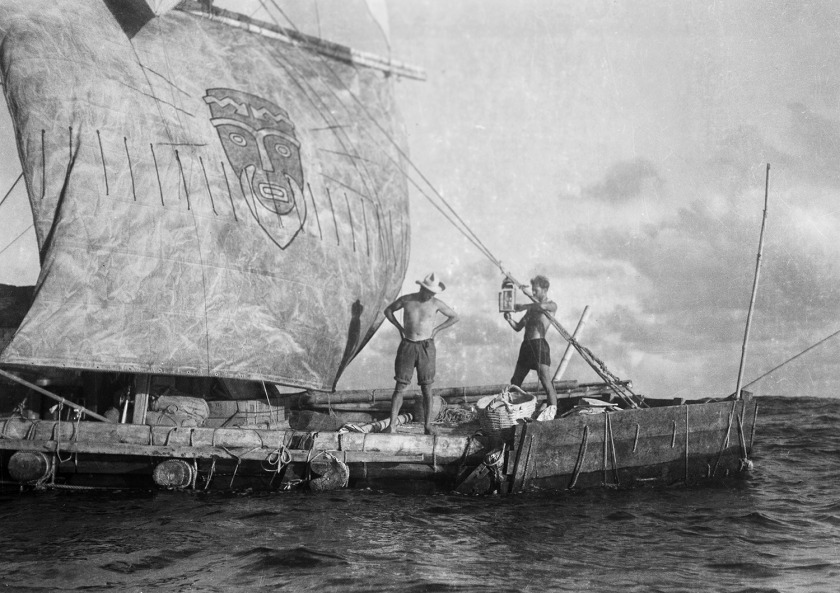
One hundred years ago this week, Grace Kingsley reported that there was actually something new in film:
It was just bound to happen, the exciting melodrama of the air. And when in that melodrama appears no less a famous a person than Lieut. Locklear, you know it’s a foregone conclusion that crowds are going to see it. Locklear himself is the hero of the photodrama, The Great Air Robbery, which is on view at the Surburba.
Of course, the big scene is where Locklear changes from one airplane to another while the machines are high in the air. It is this feat and the fact that the public has the chance to view the real hero of the war, which makes the real punch of the picture. Of course, there is an intricate plot and there is a love story, but these are negligible as against the other two points of attraction…. Nevertheless, airships are the source of a new kind of thrill, ever as one who only looks on, and The Great Air Robbery is fascinating at furnishing a view of all sorts of air stunts, shown with the clearest detail and most excellent photography.
Even though it was set in the future (1925), and had the newest kind of thrill, The Great Air Robbery had the oldest plot: the villain steals a gold shipment and Locklear has to chase him down. That didn’t bother anybody, and the now-lost film was a critical and commercial hit.

Ormer Locklear had gotten his pilot training after he joined the Army Air Service in 1917. He wasn’t a war hero (in fact, he never saw combat) but he was famous for his post-war barnstorming shows full of daring aerial stunts. Unfortunately, he and his co-pilot Milton Elliot crashed and died in 1920 while filming his second film, The Skywayman.
The person who had the most successful career after this film was the assistant cameraman, Elmer Dyer. He went on to specialize in aerial photography, and (this was the part that surprised me) he did not die in a plane wreck–instead it was in 1970, after a long illness. He was among the cameramen who photographed Hell’s Angels (1930) and he was nominated for an Oscar for his work on Air Force (1943). After serving in the Army’s Motion Picture Unit during World War 2, he opened his own stock footage company.
This week, Kingsley reported on a novel promotion:
Colleen Moore, Hugh Dierker photodrama star, has just finished work on an eight-reel picture as yet unnamed, and concerning the theme of which is a deep, dark mystery, known only to a few hundred newspaper people throughout the land, all of whom have promised not to say a word about it until told they may.
Unfortunately for the producer, a check of the Chronicling America database shows that the newspaper people not only didn’t break that promise, but even after the film came out they didn’t give it a lot of coverage. Entitled When Dawn Came, it was released in April 1920 but didn’t premier in Los Angeles until April 1921, and nobody at the Times wrote a review. Here’s the deep dark secret: Colleen Moore played a blind girl whose sight is restored by a reformed drug addict/alcoholic/atheist doctor, which in turn restores his faith. It was Mrs. Hugh Dierker’s lone screenwriting credit. Moore had to wait a few more years for her star-making film, Flaming Youth (1923).

Another film was getting publicity unusually early, too, but it went on to much bigger success:
June Mathis returned to the Metro studio from her vacation in New York City, and immediately started the scenario of The Four Horsemen of the Apocalypse. On her way West the Screen Classic scenario chiefess stopped in Chicago to discuss with Vicente Blasco Ibanez plans for filming his famous novel.

Four Horsemen didn’t premier in Los Angeles until March 1921 but there was plenty of pre-release publicity in the Times over the next fifteen months, including a long (for the newspaper) interview between Kingsley and the director, Rex Ingram, in August 1920. He mostly talked about the attention they paid to details and his desire to keep things realistic.

Four Horsemen became a top-grossing film in 1921, so the publicists knew what they were doing. It was a critical success too. Edwin Schallert, the Times head film critic, wrote, “in the realism of its characters and the quality of its atmosphere, the Four Horsemen reflects superlative credit on its makers.” It’s still respected, and it’s on the Library of Congress Film Registry.




































